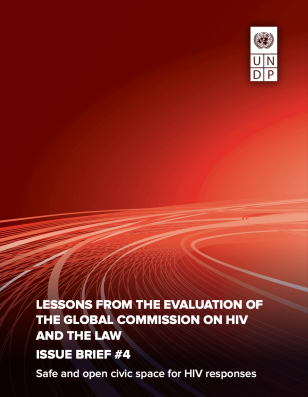Issue Brief #4: Safe and Open Civic Spaces for HIV Responses

Issue Brief #4: Safe and Open Civic Spaces for HIV Responses
July 27, 2022
Civil society is the heart of the HIV response, driving HIV responses at global, regional and national levels. The successes achieved so far are an example of the leadership and vital role that civil society and communities have played as advocates, watchdogs and providers of services. However, shrinking civic space threatens opportunities for civil society organizations, networks of people living with HIV and key populations to engage effectively in the HIV response.
This issue brief shares lessons and reflections on the importance of safe and open civic space for advancing rights-based HIV responses and informing the implementation of key commitments in the 2021 Political Declaration on HIV and AIDS and the Global AIDS Strategy. These include an understanding that early and broad engagement helps to facilitate the buy-in of key and diverse stakeholders; creating and maintaining safe, open and enabling spaces is critical for civil society to fully contribute to the HIV response; the relationships between governments and civil society are complex and require careful navigation; and capacity strengthening and sensitization of stakeholders is needed for meaningful engagement.
UNDP has worked with governments, civil society organizations and other partners to advance the recommendations of the Global Commission on HIV and the Law in 90 countries. This is part of a set of four issue briefs highlighting lessons learned coming out of the external evaluation of the Global Commission on HIV and the Law.
For access to the rest of the briefs, please click on the following links: Issue Brief #1: Enabling Legal Environments, Including Decriminalization for HIV responses | Issue Brief #2: The role of the judiciary in the HIV response | Issue Brief #3: Regional spaces for HIV responses

 Locations
Locations




